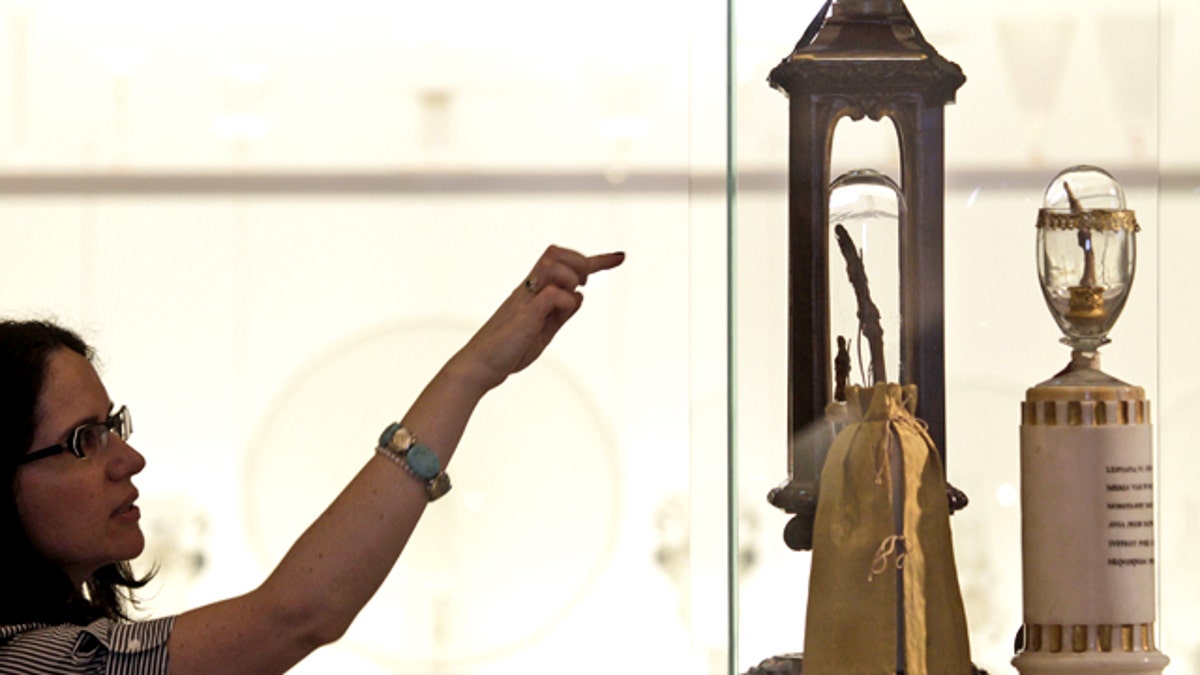
A woman looks at two fingers of Italian 17th century astronomer Galileo Galilei on display at the newly reopened Galileo Museum of Science, in Florence, Tuesday, June 8, 2010. (AP Photo/Fabrizio Giovannozzi)
FLORENCE, Italy — Two of Galileo's fingers, removed from his corpse by admirers in the 18th century, have gone on display in a Florence museum now named after the astronomer.
The Museum of the History of Science had shut down for two years for renovations. It reopened Tuesday, calling itself The Galileo Museum.
Last year, the museum director announced that the thumb and middle finger from Galileo's right hand had turned up at an auction and were recognized as being the fingers of the scientist who died in 1642. The digits are now displayed in slender, glass cases.
Also on display is his tooth. A third finger was already in the museum.
In 1737, admirers of Galileo Galilei removed the three fingers, plus the tooth and a vertebra, from his body as it was being moved from a storage place to a monumental tomb — opposite that of Michelangelo, in Santa Croce Basilica in Florence.
The vertebra is kept at the University of Padua, where Galileo taught for many years.
The tooth and the thumb and middle finger were held in a container that was passed from generation to generation in the same family, but in the early 20th century all traces of the relics disappeared. The container turned up at auction late last year, and detailed historical documents and the family's own records helped experts to identify them as the scientist's, according to museum officials.
Topping the container that the relics had long been kept in was a wooden bust of Galileo.
Visitors can also view what the museum says are the only surviving instruments designed and built by Galileo, including the lens of the telescope he used to discover Jupiter's moons and two telescopes.
The Vatican condemned Galileo for contradicting church teaching, which held at the time that the Earth, not the Sun, was the center of the universe. Two decades ago, Pope John Paul II rehabilitated the astronomer, saying the church had erred.
____
Online: www.museogalileo.it
